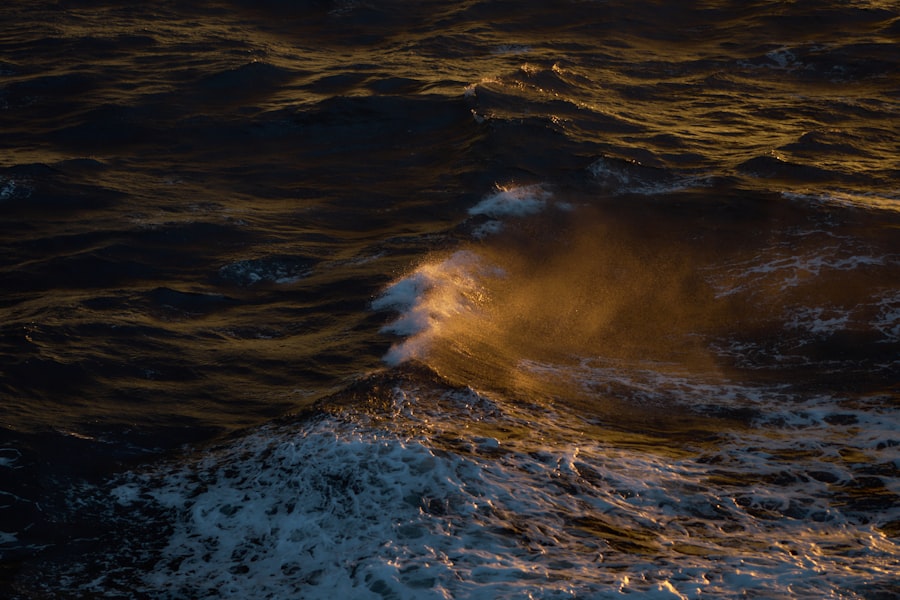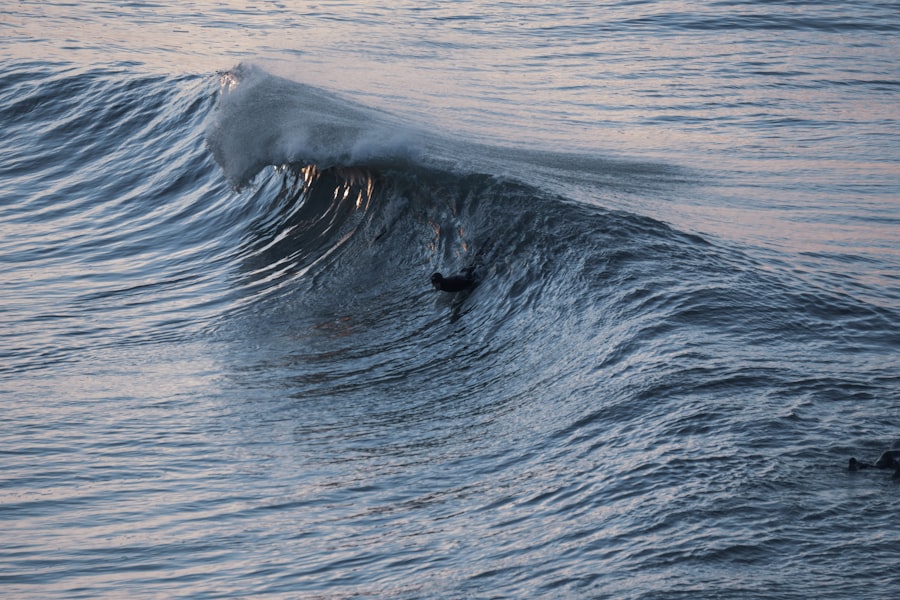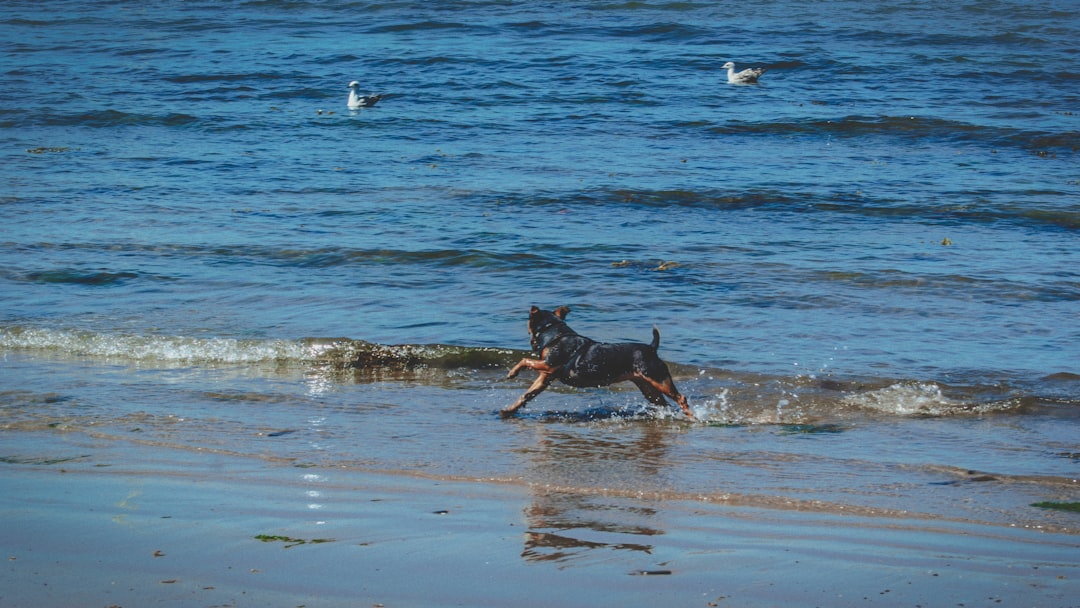The Drake Passage, a body of water situated between the southern tip of South America and Antarctica, is renowned for its tumultuous seas and unpredictable weather patterns. Spanning approximately 600 kilometers (370 miles) in width, this passage serves as a critical maritime route for vessels traveling to and from the Antarctic region. Named after the English explorer Sir Francis Drake, who navigated these waters in the late 16th century, the Drake Passage has become synonymous with both adventure and trepidation.
Its unique geographical position allows for the confluence of the Atlantic and Pacific Oceans, creating a dynamic environment that is both fascinating and formidable. The passage is not only significant for its navigational challenges but also for its ecological importance. The waters are rich in marine life, serving as a vital habitat for various species, including whales, seals, and seabirds.
The convergence of ocean currents in this area creates nutrient-rich waters that support a diverse ecosystem. For many adventurers and researchers alike, the Drake Passage represents a gateway to the pristine wilderness of Antarctica, offering a glimpse into one of the last untouched frontiers on Earth. However, understanding the complexities of this passage is essential for anyone considering a journey through its waters.
Key Takeaways
- The Drake Passage is a treacherous body of water located between the southern tip of South America and the northern tip of Antarctica.
- Navigating the Drake Passage can be perilous due to its unpredictable weather, strong winds, and rough seas.
- The best times to navigate the Drake Passage are during the austral summer months of November to March when the weather is relatively milder.
- Proper preparation for the Drake Passage includes packing appropriate clothing, seasickness medication, and being mentally prepared for the challenging journey.
- Safety measures for crossing the Drake Passage include following the instructions of experienced crew members, staying informed about weather conditions, and being aware of emergency procedures.
The Perils of the Drake Passage
Navigating the Drake Passage is often described as one of the most challenging maritime experiences due to its notorious weather conditions and rough seas. The combination of strong winds, powerful currents, and sudden storms can create waves that reach heights of up to 15 meters (49 feet). These conditions can be particularly daunting for smaller vessels or those unaccustomed to such turbulent waters.
The unpredictability of the weather means that even experienced sailors must remain vigilant and prepared for sudden changes that can turn a calm day into a tempestuous ordeal. Moreover, the passage is known for its “Drake Shake,” a term used to describe the intense rocking and rolling that vessels often experience while crossing. This phenomenon can lead to seasickness among passengers and crew alike, making it essential for travelers to be mentally and physically prepared for the journey ahead.
The perils of the Drake Passage are not merely physical; they also pose psychological challenges as individuals confront their fears and anxieties in the face of nature’s raw power. For many, however, these challenges only add to the allure of crossing this legendary waterway.
Best Times to Navigate the Drake Passage

Timing is crucial when planning a voyage through the Drake Passage. The best months for navigation typically fall between late November and early March, coinciding with the Antarctic summer. During this period, weather conditions tend to be more favorable, with calmer seas and milder temperatures.
Travelers can expect longer daylight hours, which not only enhances visibility but also provides ample opportunities for wildlife sightings and exploration. This window allows adventurers to experience the breathtaking beauty of Antarctica while minimizing the risks associated with rough seas. However, even during these optimal months, conditions can still be unpredictable.
It is not uncommon for storms to arise suddenly, reminding travelers that nature remains in control. Those planning a journey through the Drake Passage should remain flexible with their itineraries and be prepared for potential delays or changes in plans. Understanding the seasonal variations in weather patterns can significantly enhance the overall experience, allowing travelers to make informed decisions about their journey through this remarkable passage.
How to Prepare for the Drake Passage
| Preparation Tips for Drake Passage |
|---|
| Check the weather forecast |
| Pack motion sickness medication |
| Bring warm and waterproof clothing |
| Secure loose items in your cabin |
| Attend safety briefing on board |
Preparation is key when embarking on a journey through the Drake Passage. Travelers should begin by researching their options thoroughly, selecting reputable tour operators with experience navigating these challenging waters. It is essential to understand what type of vessel will be used for the crossing, as larger ships tend to handle rough seas better than smaller ones.
Additionally, travelers should familiarize themselves with safety protocols and emergency procedures specific to their chosen vessel. Packing appropriately is another critical aspect of preparation. Given the unpredictable weather conditions, layering clothing is advisable to ensure comfort throughout the journey.
Waterproof gear, sturdy footwear, and warm accessories such as hats and gloves are essential items to include in one’s packing list. Furthermore, travelers should consider bringing seasickness remedies or medications to alleviate any discomfort during rough crossings. Mental preparation is equally important; understanding that challenges may arise can help individuals maintain a positive mindset throughout their adventure.
Safety Measures for Crossing the Drake Passage
Safety should always be a top priority when crossing the Drake Passage. Reputable tour operators will have established safety protocols in place, including regular safety drills and briefings for passengers before departure. It is crucial for travelers to pay attention during these briefings and familiarize themselves with emergency equipment locations, such as life jackets and lifeboats.
Additionally, understanding how to use communication devices onboard can be invaluable in case of emergencies. Another important safety measure involves monitoring weather conditions closely before and during the crossing. Modern technology allows vessels to access real-time weather updates, enabling crews to make informed decisions about navigation routes and potential hazards.
Passengers should also stay informed about changing conditions and follow crew instructions diligently. By prioritizing safety and remaining vigilant throughout the journey, travelers can significantly reduce risks associated with navigating this challenging passage.
Navigational Challenges in the Drake Passage

The navigational challenges presented by the Drake Passage are multifaceted and require skilled seamanship to overcome. One of the primary difficulties lies in the unpredictable nature of ocean currents that flow through this region. The confluence of the Atlantic and Pacific Oceans creates complex tidal patterns that can affect vessel speed and direction.
Navigators must possess a deep understanding of these currents to chart safe courses through often turbulent waters. In addition to currents, visibility can be compromised by fog and precipitation, further complicating navigation efforts. Experienced crews utilize advanced navigational tools and techniques to ensure safe passage through these challenging conditions.
The ability to read weather patterns and respond quickly to changing circumstances is essential for successful navigation in this region. As technology continues to evolve, so too do navigational strategies, allowing modern vessels to traverse these waters with greater confidence than ever before.
Wildlife Encounters in the Drake Passage
One of the most enchanting aspects of crossing the Drake Passage is the opportunity for wildlife encounters that await travelers. The waters are teeming with life, providing a unique chance to observe various species in their natural habitats. Whales are among the most sought-after sightings; species such as humpback whales, orcas, and minke whales frequently traverse these waters during their migratory journeys.
Observing these magnificent creatures breaching or feeding is an unforgettable experience that adds depth to any voyage. In addition to whales, seabirds such as albatrosses and petrels are commonly spotted gliding gracefully above the waves. These birds are well adapted to life at sea and often accompany vessels as they navigate through the passage.
For many travelers, these wildlife encounters serve as a reminder of nature’s beauty and resilience in one of Earth’s most remote regions. The chance to witness such diverse marine life enhances the overall experience of crossing the Drake Passage, making it a highlight for adventurers seeking connection with nature.
Tips for Surviving Rough Seas in the Drake Passage
Surviving rough seas in the Drake Passage requires both mental fortitude and practical strategies. One of the most effective ways to cope with turbulent conditions is to stay informed about what to expect during the crossing. Understanding that rough seas are a possibility can help travelers mentally prepare for potential discomfort or seasickness.
It is advisable for individuals prone to motion sickness to take preventive measures before departure, such as using over-the-counter medications or natural remedies like ginger.
Passengers should avoid moving around unnecessarily and instead find secure seating or areas where they can brace themselves against movement.
Staying hydrated and consuming light snacks can also help alleviate symptoms of seasickness. Engaging in calming activities such as reading or listening to music may provide distraction from discomfort while fostering a sense of normalcy amidst chaos.
Historical Expeditions through the Drake Passage
The history of exploration through the Drake Passage is rich with tales of bravery and discovery. Early explorers faced immense challenges as they sought new trade routes and territories during an era marked by maritime exploration. Sir Francis Drake himself was one of the first Europeans known to have successfully navigated these waters in 1578 during his circumnavigation of the globe.
His journey paved the way for future expeditions that would further unveil the mysteries of Antarctica. Throughout history, numerous expeditions have ventured into these treacherous waters, each contributing valuable knowledge about navigation, geography, and marine biology. Notable figures such as Ernest Shackleton embarked on legendary voyages across the Drake Passage during their quests for exploration and scientific discovery in Antarctica.
These expeditions not only expanded human understanding of this remote region but also highlighted the resilience required to confront nature’s challenges head-on.
The Future of Navigating the Drake Passage
As technology continues to advance, so too does the future of navigating the Drake Passage. Modern vessels equipped with state-of-the-art navigation systems are better equipped than ever before to handle challenging conditions while ensuring passenger safety. Innovations in weather forecasting technology allow crews to anticipate changes more accurately, enabling them to adjust routes proactively when necessary.
Moreover, growing interest in sustainable tourism has prompted operators to adopt environmentally friendly practices while traversing these pristine waters. Efforts are being made to minimize human impact on delicate ecosystems while promoting responsible exploration of Antarctica’s natural wonders. As awareness surrounding climate change increases, future navigators will likely face new challenges related to shifting weather patterns and environmental conservation efforts within this unique region.
Tales of Adventure and Peril in the Drake Passage
The tales of adventure and peril associated with crossing the Drake Passage are woven into maritime lore, capturing imaginations across generations. Stories abound of intrepid explorers who braved fierce storms and treacherous waves in pursuit of discovery or scientific knowledge. These narratives often highlight not only human resilience but also nature’s formidable power—a reminder that while adventure awaits those who dare venture forth, respect for nature’s forces is paramount.
Among these tales are accounts of shipwrecks that serve as cautionary reminders of the dangers inherent in navigating these waters. The legacy left behind by those who faced adversity continues to inspire modern adventurers seeking their own journeys through this legendary passage. Each crossing adds another chapter to an ongoing saga filled with triumphs and tribulations—a testament to humanity’s enduring spirit in exploring uncharted territories while embracing both wonder and respect for nature’s majesty.
In recent years, the Drake Passage has garnered attention not only for its treacherous waters but also for the mysterious and formidable monster waves that have been reported by sailors and researchers alike. These colossal waves, often reaching heights that defy expectations, pose significant challenges to navigation and scientific exploration in the region. For those interested in learning more about the phenomena of monster waves and their impact on maritime activities, a related article can be found on MyGeoQuest. This article delves into the science behind these massive waves and their implications for oceanic studies. For further reading, you can visit the article by following this link.
WATCH NOW! Drake Passage: Earth’s Deadliest Waters Revealed
FAQs
What are Drake Passage monster waves?
Drake Passage monster waves are exceptionally large and powerful waves that occur in the Drake Passage, the body of water between South America’s Cape Horn and the South Shetland Islands of Antarctica.
What causes Drake Passage monster waves?
Drake Passage monster waves are primarily caused by the strong winds and currents that converge in the narrow passage between South America and Antarctica. These conditions create a perfect storm for the formation of massive waves.
How large can Drake Passage monster waves get?
Drake Passage monster waves can reach heights of up to 30 meters (98 feet), making them some of the largest and most dangerous waves in the world.
Are Drake Passage monster waves a danger to ships and sailors?
Yes, Drake Passage monster waves pose a significant danger to ships and sailors navigating through the area. The extreme size and power of these waves can cause serious damage to vessels and put the lives of crew members at risk.
Are there any precautions taken to avoid Drake Passage monster waves?
Ships and sailors traveling through the Drake Passage often take precautions such as carefully monitoring weather conditions, choosing the best routes to minimize exposure to the waves, and ensuring that vessels are equipped to handle rough seas.
Are there any scientific studies or research on Drake Passage monster waves?
Yes, scientists and researchers have conducted studies on Drake Passage monster waves to better understand their formation and behavior. This research helps improve safety measures for ships and provides valuable data for oceanographers studying wave dynamics.
